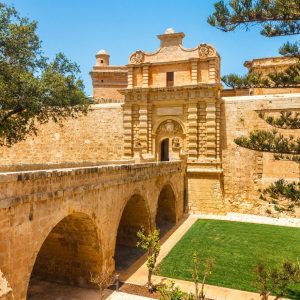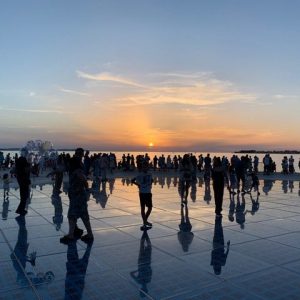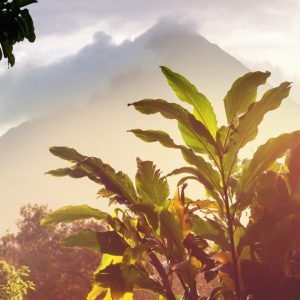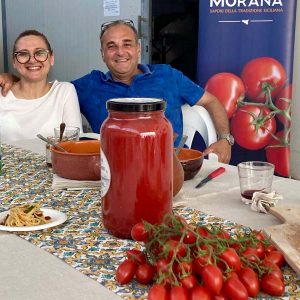The Bodhi tree and the jolly monk
Anuradhapura was established as the first capital of Sri Lanka under King Pandukabhaya in 380BC. We explored the key aspects of the city, learning it had been burned down by the South Indian Chola’s on multiple occasions. Visually, the impressive collection of Stupas/Dagobas (the words seem interchangeable) are a marvel of ancient engineering skills. Some originally soared over 100m high and were probably only surpassed by Egypt’s great pyramids at that time. 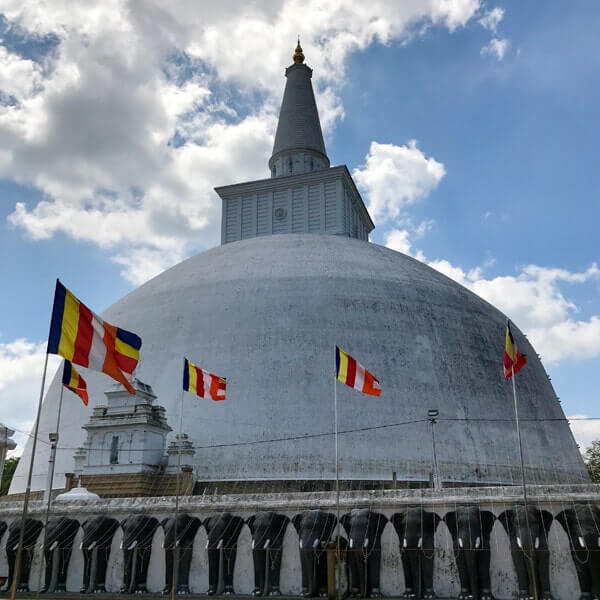 Mind boggling volumes of materials were consumed in these ‘relic houses’ for example the Jetvanarama Dagoba was said to have used 90 million bricks. The site is of significant importance for Buddhists, having been the first home in Sri Lanka for the Buddha’s tooth relic and also the home of the Bodhi tree, said to be the oldest historically authenticated tree in the world. It was this tree species that Siddhartha Gautama meditated under to achieve enlightenment, giving birth to the Buddhist movement.
Mind boggling volumes of materials were consumed in these ‘relic houses’ for example the Jetvanarama Dagoba was said to have used 90 million bricks. The site is of significant importance for Buddhists, having been the first home in Sri Lanka for the Buddha’s tooth relic and also the home of the Bodhi tree, said to be the oldest historically authenticated tree in the world. It was this tree species that Siddhartha Gautama meditated under to achieve enlightenment, giving birth to the Buddhist movement.
An early exit from my comfortable bed at the Cinnamon Lodge, saw me heading off to climb Sigiriya Rock, before the crowds arrived and the day got hot. Along the way we passed signs warning of wild elephants, which local farmers see off their lands with fire crackers (we think we have issues with deer crossing the roads, but Sri Lankan’s have mightier beasts to consider). King Kasyapa built his palace at the top of this sheer sided slab of granite, wishing to achieve an impenetrable fortress after murdering his father in 477. To admire the ruins, cave frescos, giant lion feet and the mirror wall I needed to navigate 2,000 steps (return trip) many narrow and slippery after a rain shower. It was worth it though, the frescos, for example, are remarkably well preserved.
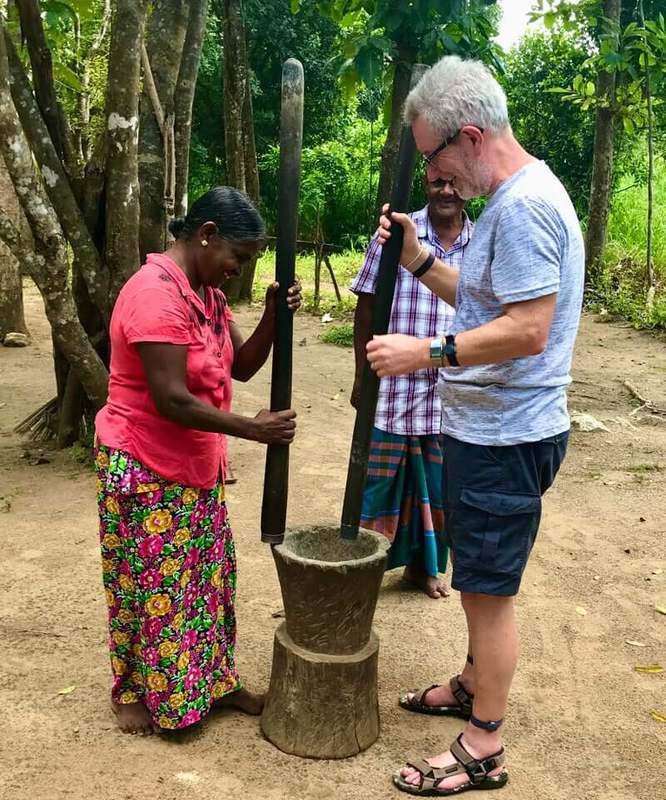 Lunch was with a local family who extended a warm welcome to their home and a multitude of sunny smiles, but the lady of the house had that mischievous twinkle in her eye (so we know who’s the fun one around here). We reached their farm via a small tractor and trailer (a lot of fun) and learnt how to prepare the meal from scratch. Helpfully lending a hand (or hindering the whole process) we had a go at milling the flower and removing the husks from the rice. We really enjoyed the very tasty lunch and some superb rural hospitality.
Lunch was with a local family who extended a warm welcome to their home and a multitude of sunny smiles, but the lady of the house had that mischievous twinkle in her eye (so we know who’s the fun one around here). We reached their farm via a small tractor and trailer (a lot of fun) and learnt how to prepare the meal from scratch. Helpfully lending a hand (or hindering the whole process) we had a go at milling the flower and removing the husks from the rice. We really enjoyed the very tasty lunch and some superb rural hospitality.
“On yer bike” said Priya (our guide) and so off we went to explore Polonnaruwa on two wheels (I was a little wobbly, must have been funny to watch). It’s a good way to explore the ruins of the second capital of Sri Lanka and visiting the quadrangle and royal palace area gave us a real idea of how magnificent this city would have been (with a little imagination). We admired the many intricate carvings that have survived and structures such as the bathing pool and audience hall, but perhaps our favourite was the 18m diameter Vatadage (Buddhist temple) and its well-preserved moonstone.
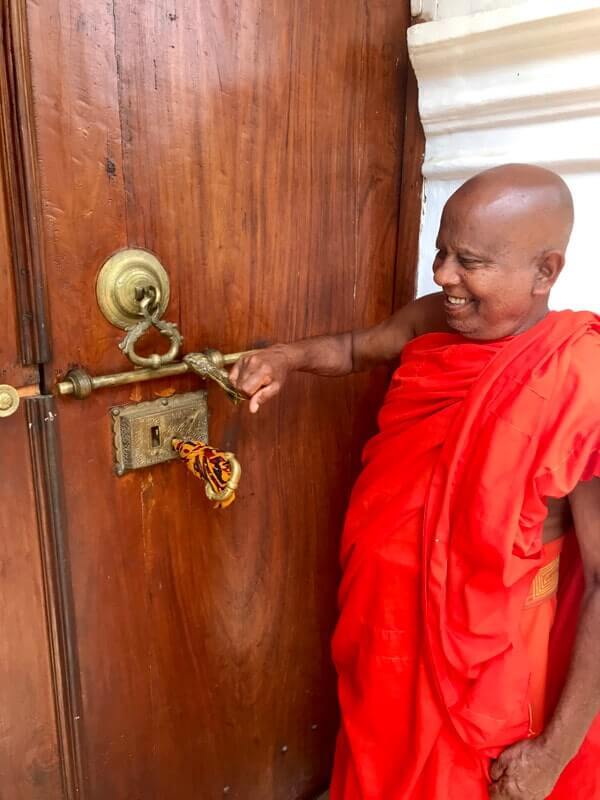 I had to work for my next experience in the aptly named Cultural Triangle, trudging up the 300 odd steep steps that give access to the Dambulla Rock Cave Temple. The series of five caves were started in the first century by King Valagamba and were subsequently added to by following monarchs. Today they house an extensive collection of Buddha statues, paintings, carvings and other works. Cave one impressed with a 15-meter reclining Buddha, then each subsequent cave offered up its own version of historic relics. Sadly Linda was unable to make the climb, so was destined to miss out on the ‘caves of wonders’, but Priya was not to be defeated. He subsequently arranged for us to have an exclusive viewing of a smaller cave temple, which was mercifully reached by just a few steps. Degaldoruwa cave temple was no less wonderful because, despite having less relics, it did have its own reclining Buddha and no crowds. We were greeted and shown around by simply the jolliest monk we’ve ever met. Full of beaming smiles and pride in the cave temple he was showing us he turned our visit into a special and rewarding experience.
I had to work for my next experience in the aptly named Cultural Triangle, trudging up the 300 odd steep steps that give access to the Dambulla Rock Cave Temple. The series of five caves were started in the first century by King Valagamba and were subsequently added to by following monarchs. Today they house an extensive collection of Buddha statues, paintings, carvings and other works. Cave one impressed with a 15-meter reclining Buddha, then each subsequent cave offered up its own version of historic relics. Sadly Linda was unable to make the climb, so was destined to miss out on the ‘caves of wonders’, but Priya was not to be defeated. He subsequently arranged for us to have an exclusive viewing of a smaller cave temple, which was mercifully reached by just a few steps. Degaldoruwa cave temple was no less wonderful because, despite having less relics, it did have its own reclining Buddha and no crowds. We were greeted and shown around by simply the jolliest monk we’ve ever met. Full of beaming smiles and pride in the cave temple he was showing us he turned our visit into a special and rewarding experience.
Kandy served as the last Sinhalese kingdom’s capital from 1592 until it fell to the British in 1815. Here we were staying at the OZO Kandy and destined for another early start to observe the 5:30am (and least crowded) ceremony at the Temple of the Tooth. The impressive temple complex houses the single most important relic in the Buddhist faith, the tooth of the Buddha, and devotees turn up in great numbers with offerings and prayers as the casket containing the tooth is briefly displayed. 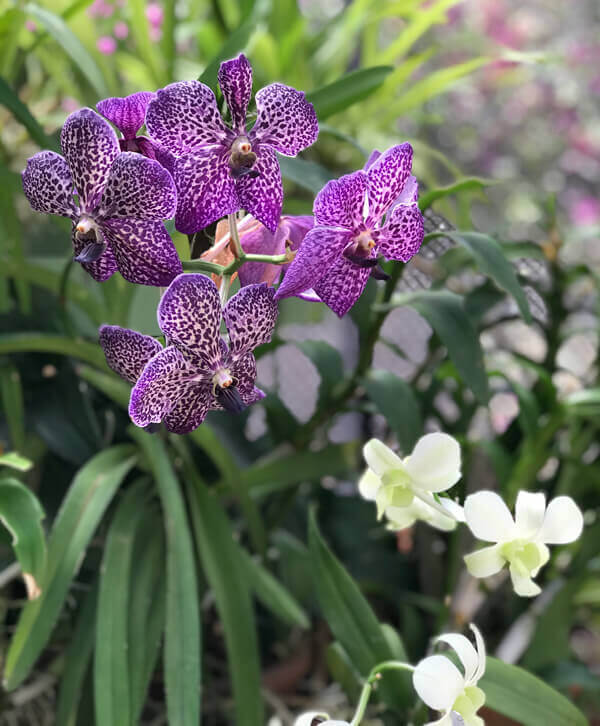 It was a real privilege to witness this special moment (although you don’t actually get to see the tooth) and later explore the riches the temple complex has to offer.
It was a real privilege to witness this special moment (although you don’t actually get to see the tooth) and later explore the riches the temple complex has to offer.
Before leaving Kandy we explored the Peradeniya Botanical Gardens. Modelled on our very own Kew Gardens there is a vast array of trees and plants, many sporting plaques of the rich and famous who planted them. We managed to spot a couple planted by our current queen and an even older one planted by Edward VII in 1875. The visually spectacular avenue of leaning trees, bending this way and that in seemingly drunken fashion, could only be matched by the vivid kaleidoscope of colours on display in the orchid house. A wonderful horticultural memory for us to muse over as we headed into tea country.
Silver Travel Advisor recommends Selective Asia.

